Leeham News and Analysis
There's more to real news than a news release.
 Leeham News and Analysis
Leeham News and Analysis
- Airbus 1Q2024 results: Airbus CEO: “A350 in-service experience drives positive reputation and orders” April 25, 2024
- A350-1000 or 777-9? Part 3 April 25, 2024
- Boeing CEO promises company is turning around…again April 24, 2024
- Solid start for stand-alone GE Aerospace despite cuts to LEAP output April 23, 2024
- SPEEA, Boeing at impasse over safety program, union says April 23, 2024
Embraer continues and refines its strategy at the low-end of 100-149 seat sector
While Airbus and Boeing slug it out in the competition for the duopoly and Bombardier struggles to gain respect as an emerging mainline jetliner producer, Embraer continues and refines its strategy in the smaller-end of the jet market with its E-Jets, E-Jet “Plus” (our term) and the E-Jet E-2.
Embraer is broadening its offering from a maximum of 122 seats to a maximum of 132 and dropping its low-end E-170 from future variants. This brings the EMB family to 90-132 seats, following the decision to undertake an extreme makeover of the current E-175/190/195 line by adapting the Pratt & Whitney P1000 Geared Turbo Fan engine to a new wing design and upgrading a variety of systems in the E-Jet E2.
Source: Embraer. Reprinted with permission.
The current jet is now called the E1. With an entry-into-service for the E2 slated for 2018, Embraer is adding some Performance Improvement Packages (PIPs) to the E1 to reduce fuel consumption and to try and match the economics of the lighter weight Bombardier CRJs.
Embraer Strategy
Bombardier invented the regional jet market with the CRJ, an evolution of the Challenger business jet. Embraer followed with its ERJ, a plane based on its successful Brasilia turbo prop. Embraer then revolutionized the regional jet approach when the company designed a clean-sheet airplane, the E-Jet, with 2×2 seating with 18.5 inch seats and larger overhead bins than on the smaller, cramped CRJs and ERJs. The comfort level and passenger space exceeded the ubiquitous Boeing 737s and Airbus A320s and far surpassed the regional jets.
Embraer positioned the E-Jets not as regional jets but as mainline airplanes that could “right size” the airplane for the market, coming in smaller than the Airbus and Boeing products. The E-Jets also had much shorter ranges, 1,800-2,200 miles, capable of one-stop, trans-con US routings but well within the more common ranges of less than 1,000 miles.
The E-Jets entered service in 2004 and have since sold more than 1,000. Embraer discontinued the ERJ and Bombardier soon found its CRJ running a poor second in sales to the more comfortable E-Jets. Those airlines more concerned with the CRJ’s lower economics than the E-Jet’s roomy cabins still bought the CRJ, but Bombardier struggled to keep up.
After Bombardier developed the CSeries, receiving a launch order in 2009 from the Lufthansa Group on behalf of Swiss Airlines, followed by an order from Airbus operator Republic Airways Holdings, Airbus launched the A320neo family. Boeing eventually followed suit.
This left Embraer in the position of having an out-classed E-Jet that entered service only five years previously. Rather than take the risk and the expense of designing an entirely new jet, EMB opted for an extreme makeover in the form of the E2. With an EIS projected for the first half of 2018, EMB will be considerably behind Bombardier’s CSeries, one year ahead of Boeing’s 737-7 MAX and one year behind the rescheduled A319neo.
The E2 is a major improvement over the E1, reducing fuel burn by 16%-23% depending on the sub-type.
Embraer is enhancing the E1 to improve economies as an interim step. EMB told us:
“On the E175-E1 Embraer is introducing an improvement package that results in a 5% reduction in fuel burn. The package is composed mainly by a new wingtip and several other minor aerodynamic changes such as wheel caps and APU air inlet improvements. On the maintenance side, intervals are being extended to 7,500 flight hours compared to 6,000 flight hours of the competition. The result is a 4% better fuel burn and 2% lower COC per trip or per seat (same seat count) against the CRJ900.” Embraer continues:
“The other members of the E-Jets E1 are also receiving fuel burn improvements but not the wingtip, so the reduction is between 1% and 2% depending on the aircraft model. The longer maintenance intervals are applicable to all E-Jets members equally.”
E-Jet E2 vs CSeries
- Flight Global has a short analysis of the progress of the CSeries flight test program (free registration required).
- An amusing comparison of the CS-100 vs the Airbus A320 may be found here.
Embraer and Bombardier are the two principal players in the 100-149 seat sector. Airbus and Boeing are focusing on the larger, more lucrative 150-220 seat sector. Their respective offerings do not compete on economics with either the CSeries or the E-Jet E2, and their sales within the small-end sector are minimal. To be sure, the 100-149 seat sector has become a niche, but it is a niche Embraer and Bombardier can fill much better than the Big Two.
Here are the announced entry-into-service (EIS) dates for the CSeries and E-Jet E2. Based on CSeries customer comments and those by Bombardier’s chief executive officer, we believe there will be an additional 6-9 month delay to EIS. The original EIS was planned for December 2013. Bombardier did not return calls or emails seeking information, so we’re sticking with out estimate.
How do the Embraer and Bombardier airplanes compare?
The E-Jet is a four abreast design whereas the CSeries seats people five abreast. This stems from their design centers. The E-Jet has an historical design center of 70-110 seats and the CSeries aiming for 100-150 seats. Dimensionally this means E-Jet E2 is longer than the equivalent seated CSeries since it needs more rows to seat the same number of passengers. This design philosophy difference also carries through to the wing (the E2 being 10% smaller than the CSeries wing) and as we shall see to aircraft performance.
Sources: Bombardier, Embraer, Leeham Co EU.
- Only the CSeries is flying, currently in test flights, and the economics analysis has yet to be done. All other models, re-engined aircraft all, are in early production or still in design. All analyses by the OEMs and by Leeham Co EU, are based on the best available information and best analysis available without actual operating data.
The E2 carries fewer passengers than the CSeries, weighs less and has a smaller payload, based on OEM specifications. This translates to lower landing fees and generally lower operating costs, according to Leeham Co EU’s analysis.
 We adjusted the CSeries seating to 31 inch pitch from Bombardier’s public depiction of 32 inches, which adds one row of seating. The industry trend toward 31 inches using slim line seats makes this adjustment logical. It also presents an apples-to-apples comparison with the E-Jet E2; EMB uses 31 inches in its public depictions of the E-Jet E2 capacities. We also configured the A319neo and 737-7MAX with 31inch pitch seating for our fuel burn analysis. Consequently we also adjusted the CSeries, A319neo and 737-7MAX weights to reflect the slim line seating.
We adjusted the CSeries seating to 31 inch pitch from Bombardier’s public depiction of 32 inches, which adds one row of seating. The industry trend toward 31 inches using slim line seats makes this adjustment logical. It also presents an apples-to-apples comparison with the E-Jet E2; EMB uses 31 inches in its public depictions of the E-Jet E2 capacities. We also configured the A319neo and 737-7MAX with 31inch pitch seating for our fuel burn analysis. Consequently we also adjusted the CSeries, A319neo and 737-7MAX weights to reflect the slim line seating.
Embraer provided us with its analysis of the E-Jet E2 economics vs the competition, using two-class configuration comparisons. Embraer’s conclusions are:
Embraer’s provided this as the basis for its analysis:
“For the comparison with the CSeries we will concentrate on the E190/195-E2 against the CS100 as the CS300 is in an upper segment competing directly with the A319 and 737-700. The E190-E2 is approximately 10% smaller than the CS100 and it was positioned to remain as the only true 100-seater available in the market. It has 6.5% lower COC per trip and 3.5 higher COC per seat against CS100.
“Both airplanes use the same engine but the E190-E2 is being designed with more focus on operating cost than on takeoff performance and range as the CSeries. The result is that E190-E2 wing and empennages are smaller resulting in less drag, less weight and better fuel burn. The E190-E2 also fits doors covering the landing gear in-flight which also contributes to reduce drag and improve fuel burn.
“All in, the E190-E2 has a 8% advantage in fuel burn against CS100. In maintenance, lessons learned from over 1,000 airplanes in-service of the first E-Jets generation provides a unique database for reducing costs and improving reliability for the E2. Also contributing to a better maintenance cost is the fact that the maximum capacity of the E-Jets E2 is around 140 passengers while CS100 systems had to be designed for the CS300 maximum capacity, which is 160 passengers.
“The E195-E2 is a simple stretch of the E190-E2 (same wing and engine) with 20% higher capacity. It has 9% higher fuel burn and 6.5% higher COC per trip than the E190-E2. Against the CS100 it has 1% higher fuel burn per trip but 9% better fuel burn per seat. In COC both airplanes have practically the same cost per trip but the E195-E2 has 10% lower cost/seat.”
In our analysis, undertaken by our European affiliate, we have results which differ more or less from Embraer’s results depending on applied load factor.
For a calculation with all seats filled (ie 100% load factor) the E-190-E2 has 101% of CS100 trip fuel costs and 108% seat costs. Reduce that to a more realistic 70% load factor with both aircraft transporting 80 passengers and the difference narrows to E190-E2 being within 1% for both trip and seat fuel costs. Clearly, when the payload falls into the sub-100 passenger range the E-Jet comes into its design space and matches both trip and seat fuel costs versus the larger CS100. The CSeries is then too lightly loaded and cannot use its advanced composite wing to advantage.
Embraer prefers to compare the E-195-E2 against the CS100. We have pitched it against the CS300, A319neo and 737-7 MAX, all with the same 31 inch single class seating. They then seat 132, 140, 144 and 144 passengers in our comparison. Once again the E-Jet shows the same performance characteristics versus the CS300. At 100% load factor, it gains 1% on trip fuel costs but loses 5% on seat costs. Change the load factor to the more typical 70%, which we have taken as 100 passengers for all, and the E-Jet is matching the trip and seat fuel costs of the CS300. The 195-E2 equals and the CS300 undercuts with 5% the A319neo and 737-7 MAX on 100% load factor seat fuel costs; both beat the trip cost by 10%. When the load factor reduces to 70% the higher efficiencies are with the smaller aircraft both for trip (by about 10%) and seat (about 7%).
Here is the detailed data; our assumptions are noted in the graphs:
Fuel costs per Aircraft mile and Seat mile based on passengers + bags payload (no cargo) and 100% load factor. Source: Leeham Co EU.
Fuel costs per Aircraft mile and Seat mile based on passengers + bags and 70% load factor, no cargo. Source: Leeham Co. EU.
Differing philosophies
Bombardier and Embraer approached their new airplane projects differently. Bombardier went with a clean-sheet design and Embraer chose the derivative route. Bombardier claims its CSeries is an optimized design for the 100-149 seat sector while the E-190/195 and E-195-E2 are multiple stretches of the basic E-170/175 series, with new wings and ultimately new engines.
Bombardier also added enhanced air field performance into its design, as EMB noted above. The CSeries can operate from shorter runways and more challenging airports, such as London City Airport and potentially from Toronto Billy Bishop Airport, in ways the E-Jets cannot.
Our analysis shows that this works well for the segment that Embraer addresses, when the aircraft meets the real world of fluctuating passenger loads, which often hovers around or dips below 100 passengers. The E-Jet E2s operating economics matches the more advanced CSeries for normal load factors. When more passengers or cargo are transported over longer distances, the CSeries comes into its design window and leaves both the E-Jets behind in efficiency. They both are more economical then the A319neo and 737-7MAX for this segment of the market. CSeries provides more field performance, range and cargo capabilities than the E-Jet E2.
By Leeham Co and Leeham Co EU.
Related
Category: Airbus, Boeing, Bombardier, CSeries, Embraer, Leeham Co., Pratt & Whitney
Tags: 737-7, 737-700, A319ceo, A319neo, A320, Airbus, Boeing, Bombardier, CRJ, CRJ-1000, CRJ-700, CRJ-900, CS-100, CS-300, CSeries, E-175, E-175-E2, E-190, E-190 E2, E-195, E-195 E2, E-Jet E1, E-Jet E2. ERJ, Embraer, Geared Turbo Fan, GTF, Pratt & Whitney, Pure Power
19 Comments on “Embraer continues and refines its strategy at the low-end of 100-149 seat sector”
Leave a Reply Cancel reply
Email Subscription
Twitter Updates
My TweetsAssociations
Aviation News-Commercial
Commentaries
Companies-Defense
Resources
YouTube
Archives
- April 2024
- March 2024
- February 2024
- January 2024
- December 2023
- November 2023
- October 2023
- September 2023
- August 2023
- July 2023
- June 2023
- May 2023
- April 2023
- March 2023
- February 2023
- January 2023
- December 2022
- November 2022
- October 2022
- September 2022
- August 2022
- July 2022
- June 2022
- May 2022
- April 2022
- March 2022
- February 2022
- January 2022
- December 2021
- November 2021
- October 2021
- September 2021
- August 2021
- July 2021
- June 2021
- May 2021
- April 2021
- March 2021
- February 2021
- January 2021
- December 2020
- November 2020
- October 2020
- September 2020
- August 2020
- July 2020
- June 2020
- May 2020
- April 2020
- March 2020
- February 2020
- January 2020
- December 2019
- November 2019
- October 2019
- September 2019
- August 2019
- July 2019
- June 2019
- May 2019
- April 2019
- March 2019
- February 2019
- January 2019
- December 2018
- November 2018
- October 2018
- September 2018
- August 2018
- July 2018
- June 2018
- May 2018
- April 2018
- March 2018
- February 2018
- January 2018
- December 2017
- November 2017
- October 2017
- September 2017
- August 2017
- July 2017
- June 2017
- May 2017
- April 2017
- March 2017
- February 2017
- January 2017
- December 2016
- November 2016
- October 2016
- September 2016
- August 2016
- July 2016
- June 2016
- May 2016
- April 2016
- March 2016
- February 2016
- January 2016
- December 2015
- November 2015
- October 2015
- September 2015
- August 2015
- July 2015
- June 2015
- May 2015
- April 2015
- March 2015
- February 2015
- January 2015
- December 2014
- November 2014
- October 2014
- September 2014
- August 2014
- July 2014
- June 2014
- May 2014
- April 2014
- March 2014
- February 2014
- January 2014
- December 2013
- November 2013
- October 2013
- September 2013
- August 2013
- July 2013
- June 2013
- May 2013
- April 2013
- March 2013
- February 2013
- January 2013
- December 2012
- November 2012
- October 2012
- September 2012
- August 2012
- July 2012
- June 2012
- May 2012
- April 2012
- March 2012
- February 2012
- January 2012
- December 2011
- November 2011
- October 2011
- September 2011
- August 2011
- July 2011
- June 2011
- May 2011
- April 2011
- March 2011
- February 2011
- January 2011
- December 2010
- November 2010
- October 2010
- September 2010
- August 2010
- July 2010
- June 2010
- May 2010
- April 2010
- March 2010
- February 2010
- January 2010
- December 2009
- November 2009
- October 2009
- September 2009
- August 2009
- July 2009
- June 2009
- May 2009
- April 2009
- March 2009
- February 2009
- January 2009
- December 2008
- November 2008
- October 2008
- September 2008
- August 2008
- July 2008
- June 2008
- May 2008
- April 2008
- March 2008
- February 2008


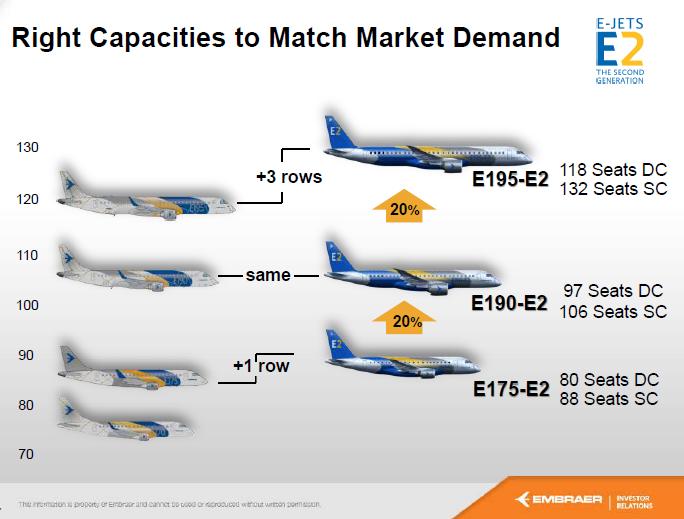
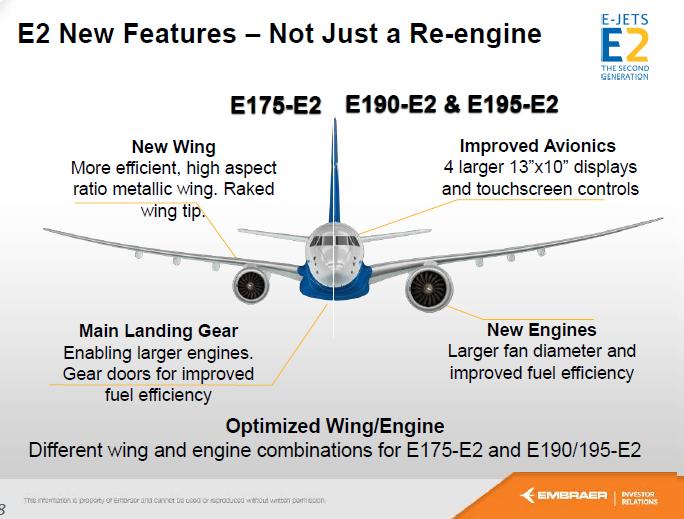

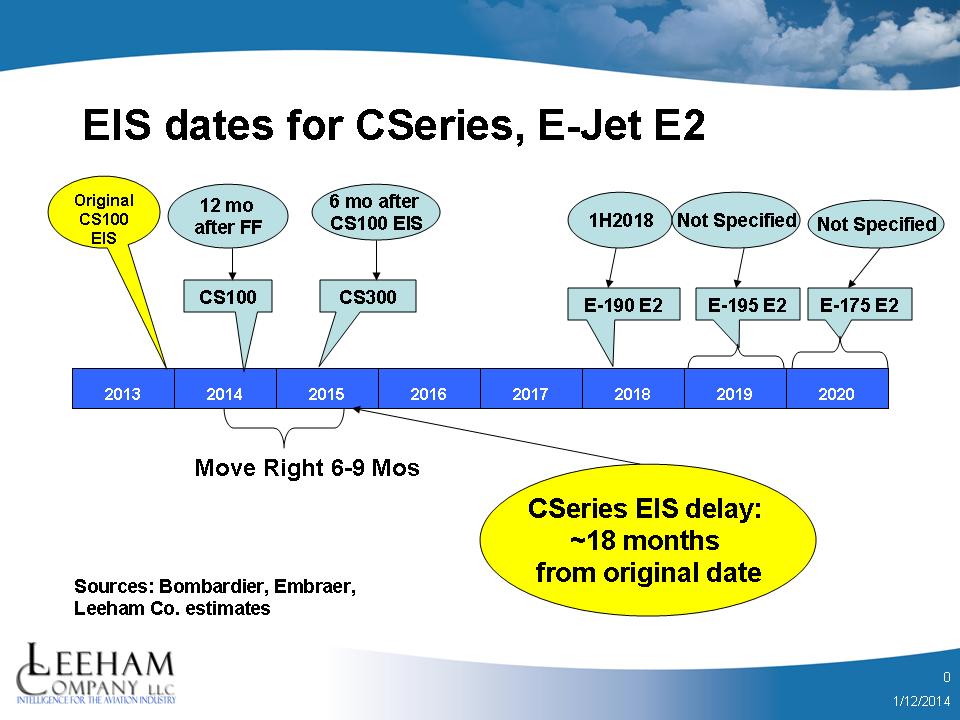
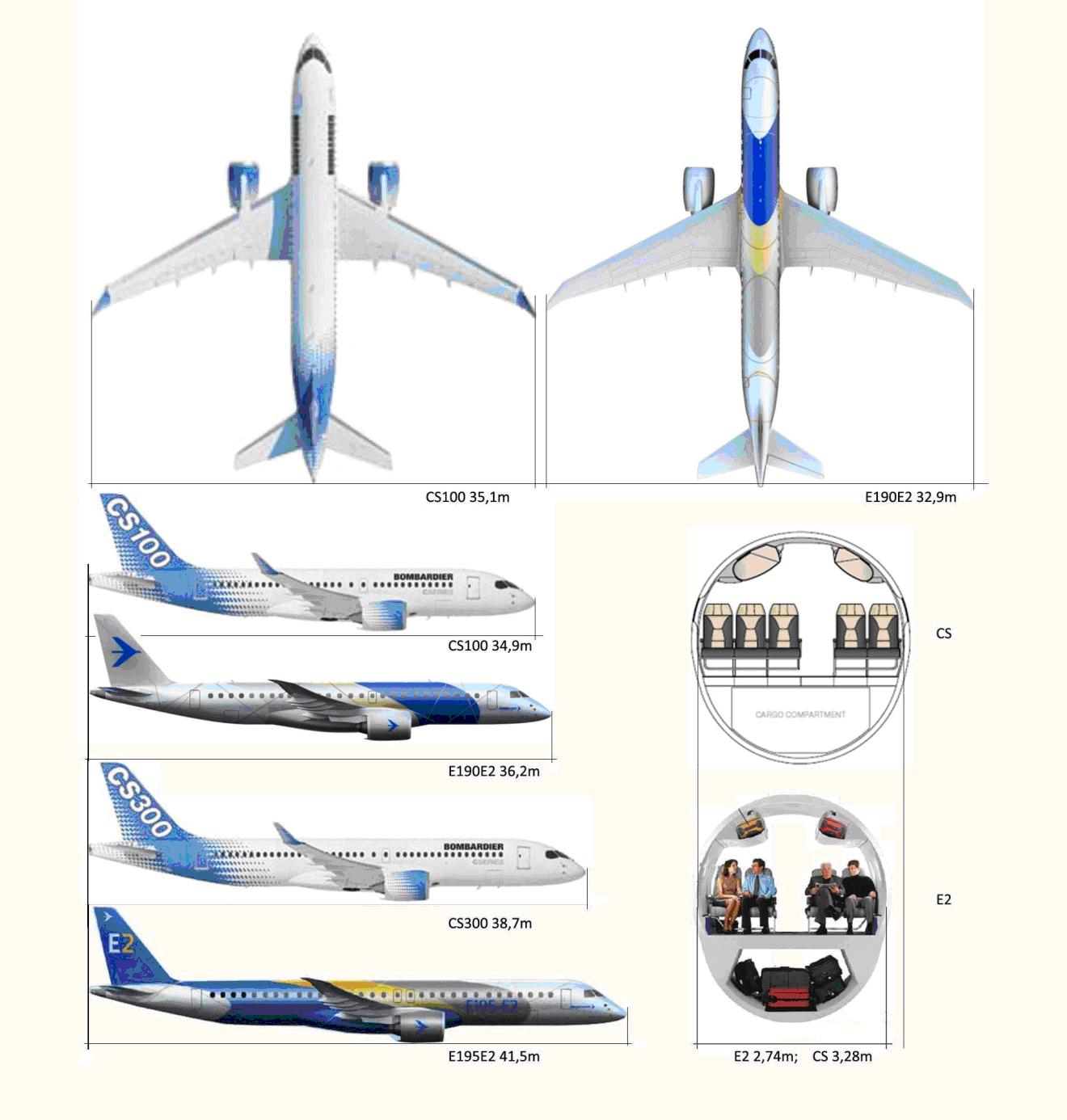

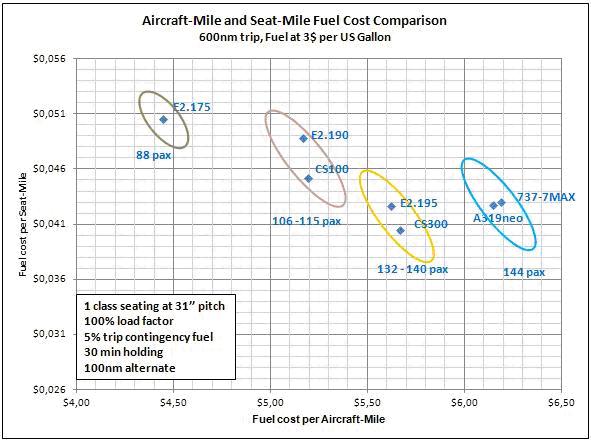
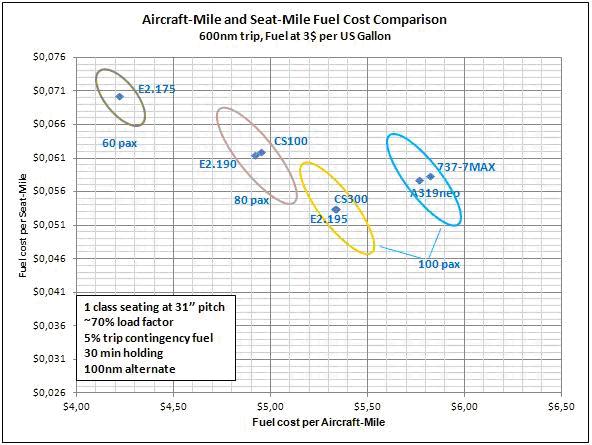
These guys are serious:-)
Mark Conrad
Sent from my iPhone
>
Nice extyensive update fom last years discussion. The “E180-190-200” portfolio as predicted seems to be the right choice.
https://leehamnews.com/2013/01/08/embraer-selects-pw-gtf-for-e-jet-re-concept-clarity-comes-at-last/
I think the E195E2 will weigh significantly less then the CS100, maybe 8 metric tons? That is a lot. OEW proves a good indicator for DOC.
BBD will have to fight a battle at two fronts, with Embraer and Airbus / Boeing on the other site. Looking at A319/737-700 commitments sofar, and said E195-CS100 OEW differences, up seems to best direction for BBD in the longer term. They admitted already by stretching the CS300. Once 300 CSeries are sold, I think CS500 launch will be near..
Re field performance, I flew E170 jets from LCY and I saw a E190 too. So only a small niche for the CSeries left in that segment.
How do you get the E195 weighing 8 tons less then Cseries? They are using conventional construction (not even AlLi) and the series uses composite wings and AlLi fuse. Also the wider fuse cross section is stiffer and can be made lighter. The weight differences are quite small i think. I did some guessing with the sketchy avail info (38000 lbs max fuel for example) ad it no where near 8T. More like a few thousand lbs.
Jal 787 grounded in japan owing to battery overheating.
Boeing boosted Three Layers of Protection, 200.000 Engineering hours and extensive testing to convince the public, airlines and FAA.
http://www.boeing.com/787-media-resource/docs/787-battery-certification.pdf
I Manufacturing Improvements
Enhanced cell and battery build
processes
Enhanced production tests
for cells and batteries
II Design Enhancements
Charger design improvements
Tightened voltage range
Battery design improvements
III Enclosure System
Added battery enclosure
It seems the first two layers failed. On a small fleet within a year. The FAA approved everything and we shouldn’t even ask if they were under any pressure.
Teething problems are normal for new aircraft, we have total confidence in the 787, (dispatch..) reliability for the 787 is as good as anything, airlines express full confidence.
We are told what we want to hear and sing along. In Europe heads would roll.
“Boeing boosted Three Layers of Protection….
…It seems the first two layers failed.”
It’s too soon to jump to any conclusions on this, but it’s not the least bit surprising that you have. It could be that only one part of one of the layers failed, and not the first two. Problem is the public knows nothing about the manufacturing/inspection history of the one cell that failed, nor do we know the circumstances surrounding the failure.
Fortunately, this failure seems like it was really mild. It’s likely that since the new battery system has more instrumentation, Boeing will get some good failure data from doing forensics on an intact, minimally damaged battery.
Is there any clarity as to the nature of the incident i.e. cause of the overheating.
One account I read blamed the “charging” connector and another said a cell “switch” was mistakenly open.
In any event, is this a systemic problem or a “normal” preflight mistake that does not go to the heart of the battery design and system? It has been months between the last incident.
It has been months between the last incident.
Exactly 1 year less 2 days:
http://avherald.com/h?article=45c377c5&opt=0
It was far less than a year. There was a grounding between January 16, 2013 and April 27, 2013. Therefore less than 9 months of operation between the incidents.
Yes ~9 month of use.
Is this some well known gestation period ;-?
Bombardier are in the same position Embraer was with the CRJ vs Ejet. The CSeries ulimately has cabin appeal – 5 abrest vs 4. That will be the deciding factor in the end besides the economics
What about drag? The E-Series fuselage has 30% less frontal surface compared to C-Series. How big is this factor in the fuel equation.
Given the same number of seats, the E2 will be 25% longer than the Cseries, so it will in turn increase drag. There is no free lunch …
The fuselage’s surface will just rise by 5%. I guess surface is the important variable for friction.
What appeal?
By a comfort metric, E-Jets have more width per seat.
The comparison done here used the same seat pitch.
BBD sold 16 CSeries planes with options for 10 more Cseries to a New Saudi airline
http://www.arabianbusiness.com/new-saudi-airline-signs-2bn-planes-agreement-534962.html
How do you think about actual selling price of E175 E-2?
There is no clear winner look at the charts by themselves. Customer needs (routes and load factors) together with fleet commonality (maintenance and crew training) should govern the success of each design. Presumably much customer input went into the clean sheet designs hence if done correctly these designs should be better.
Remember you need to stretch the embraer 190 e2 with 120 seats airlines needs that demand